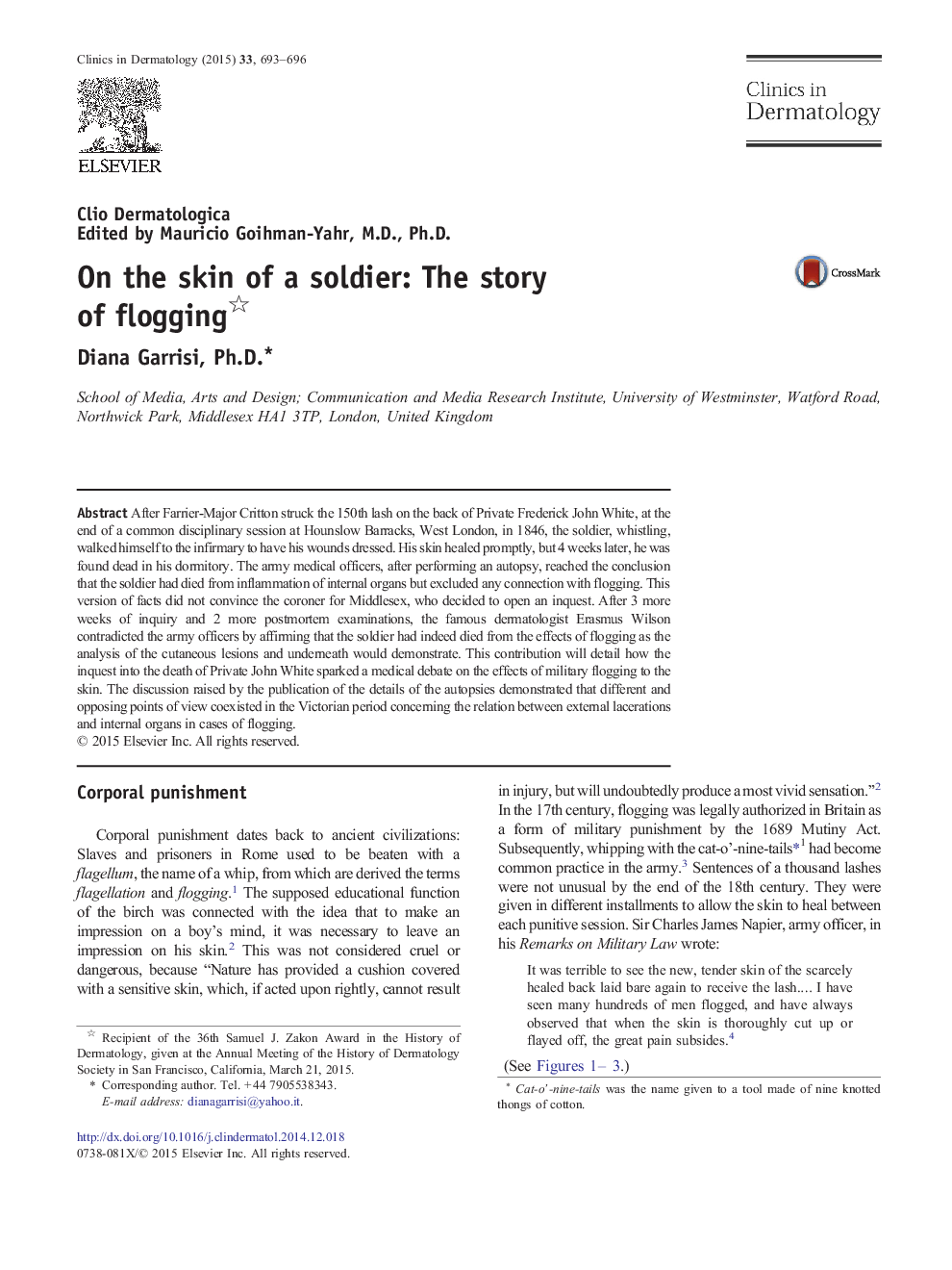| کد مقاله | کد نشریه | سال انتشار | مقاله انگلیسی | نسخه تمام متن |
|---|---|---|---|---|
| 3194192 | 1201380 | 2015 | 4 صفحه PDF | دانلود رایگان |
After Farrier-Major Critton struck the 150th lash on the back of Private Frederick John White, at the end of a common disciplinary session at Hounslow Barracks, West London, in 1846, the soldier, whistling, walked himself to the infirmary to have his wounds dressed. His skin healed promptly, but 4 weeks later, he was found dead in his dormitory. The army medical officers, after performing an autopsy, reached the conclusion that the soldier had died from inflammation of internal organs but excluded any connection with flogging. This version of facts did not convince the coroner for Middlesex, who decided to open an inquest. After 3 more weeks of inquiry and 2 more postmortem examinations, the famous dermatologist Erasmus Wilson contradicted the army officers by affirming that the soldier had indeed died from the effects of flogging as the analysis of the cutaneous lesions and underneath would demonstrate. This contribution will detail how the inquest into the death of Private John White sparked a medical debate on the effects of military flogging to the skin. The discussion raised by the publication of the details of the autopsies demonstrated that different and opposing points of view coexisted in the Victorian period concerning the relation between external lacerations and internal organs in cases of flogging.
Journal: Clinics in Dermatology - Volume 33, Issue 6, November–December 2015, Pages 693–696
